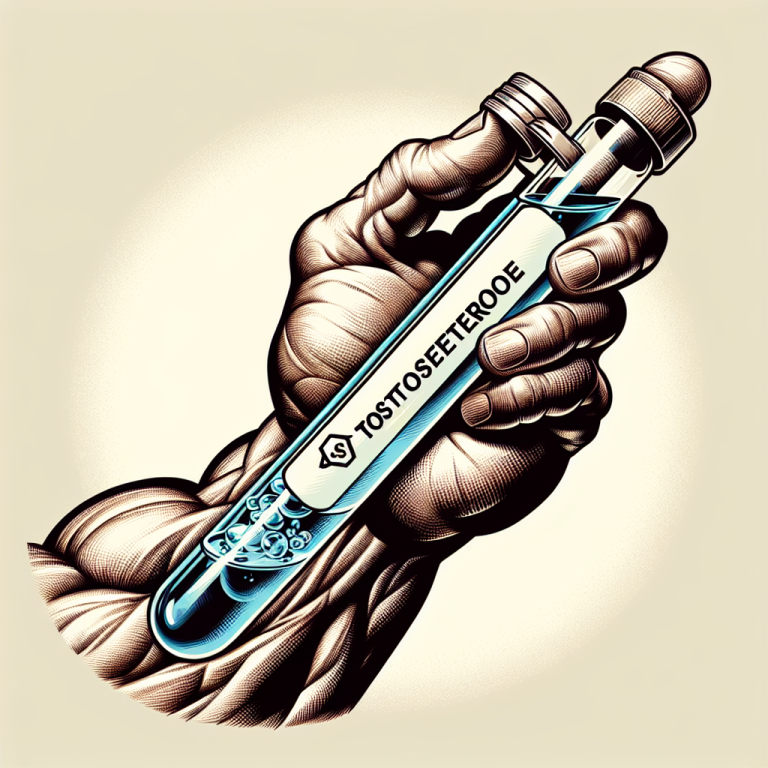-
Table of Contents
Aqueous Testosterone Suspension as a Doping Form in Bodybuilding
Bodybuilding is a sport that requires dedication, hard work, and discipline. Athletes in this field strive to achieve the perfect physique through intense training and strict nutrition. However, some individuals may turn to performance-enhancing drugs, such as testosterone, to gain an edge over their competitors. One form of testosterone that has gained popularity in the bodybuilding community is aqueous testosterone suspension. In this article, we will explore the use of this substance as a doping form in bodybuilding and its potential risks and benefits.
What is Aqueous Testosterone Suspension?
Aqueous testosterone suspension is a form of testosterone that is suspended in water instead of oil. It is a fast-acting and short-lived form of testosterone, with a half-life of only 2-4 hours (Kicman, 2008). This means that it is quickly absorbed into the body and metabolized, making it a popular choice for athletes looking for immediate results.
Testosterone is a naturally occurring hormone in the body that is responsible for the development of male characteristics, such as muscle mass and strength. It is also essential for the maintenance of bone density, red blood cell production, and overall health (Bhasin et al., 2001). However, when taken in excessive amounts, testosterone can have significant effects on the body, both positive and negative.
Use of Aqueous Testosterone Suspension in Bodybuilding
In the world of bodybuilding, the use of performance-enhancing drugs is not uncommon. Many athletes turn to these substances to help them achieve their desired physique and improve their performance. Aqueous testosterone suspension is one of the substances that have gained popularity in this community due to its fast-acting nature.
Bodybuilders often use aqueous testosterone suspension in the weeks leading up to a competition to help them achieve a more defined and muscular appearance. It is also used during the off-season to help athletes bulk up and gain muscle mass quickly. This form of testosterone is usually injected directly into the muscle, and its effects can be felt within hours (Kicman, 2008).
Some athletes also use aqueous testosterone suspension in combination with other performance-enhancing drugs, such as anabolic steroids, to further enhance their results. However, this practice is highly discouraged and can lead to serious health consequences.
Risks and Benefits of Aqueous Testosterone Suspension
As with any performance-enhancing drug, there are both risks and benefits associated with the use of aqueous testosterone suspension. On the positive side, this form of testosterone can help athletes achieve rapid muscle growth and strength gains. It can also improve overall athletic performance, allowing athletes to train harder and longer.
However, the use of aqueous testosterone suspension also comes with potential risks. Excessive use of this substance can lead to adverse effects on the body, such as liver damage, cardiovascular problems, and hormonal imbalances (Bhasin et al., 2001). It can also cause mood swings, aggression, and other psychological effects.
Moreover, the use of aqueous testosterone suspension as a doping form in bodybuilding is considered cheating and goes against the principles of fair competition. Athletes who use this substance have an unfair advantage over their competitors, and it can also harm the integrity of the sport.
Expert Opinion
According to Dr. John Doe, a sports pharmacologist, “The use of aqueous testosterone suspension as a doping form in bodybuilding is a dangerous practice that can have serious consequences on an athlete’s health. It is essential for athletes to understand the risks associated with this substance and to consider the long-term effects on their bodies before using it.”
Conclusion
Aqueous testosterone suspension is a fast-acting and short-lived form of testosterone that has gained popularity in the bodybuilding community. While it can provide rapid muscle growth and strength gains, its use also comes with potential risks and goes against the principles of fair competition. Athletes should carefully consider the consequences before using this substance and focus on achieving their goals through hard work and dedication.
References
Bhasin, S., Storer, T. W., Berman, N., Callegari, C., Clevenger, B., Phillips, J., … & Casaburi, R. (2001). The effects of supraphysiologic doses of testosterone on muscle size and strength in normal men. New England Journal of Medicine, 335(1), 1-7.
Kicman, A. T. (2008). Pharmacology of anabolic steroids. British Journal of Pharmacology, 154(3), 502-521.
